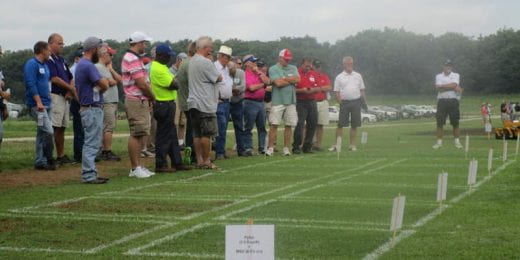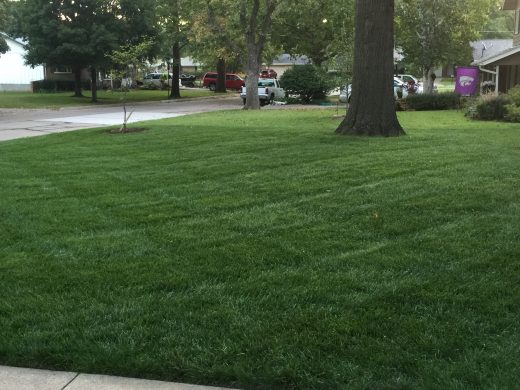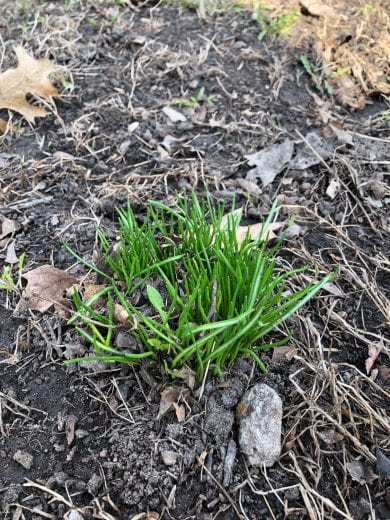Here are a couple of articles that should be helpful if you are
dealing with storm damage after a series of thunderstorms in our area. As we continue to face inclement weather throughout this week, please keep this information in mind. ***Articles have been provided by Warm Upham.
Storm Damage and the Garden
Various parts of the state have had high winds, excessive rainfall and
hail. This column deals with what can be done to help our gardens recover.
Heavy rain: The force of rainfall pounding on the soil can result in a
thick crust that prevents seed emergence and partially blocks oxygen
from reaching roots. A light scraping after the soil surface has dried
is all that is needed to correct these problems. Be careful of deep
tilling as it may damage young, tender roots.
Standing water: Standing water cuts off oxygen to the roots, which can result in plant damage if it doesn’t drain quickly enough. Most plants can withstand 24 hours of standing water without harm. Hot, sunny weather can make a bad situation worse by the water becoming hot enough to “cook” the plants. There isn’t much that can be done about this unless a channel can be cut to allow the water to drain.
Hail damage: Plants should recover quickly as long as the leaves only were damaged by the hail as leaves regenerate quickly. The situation becomes much more serious if the stems and fruit were damaged. The plant can recover from a few bruises but if it looks like the plants were mowed down by a weed whip, replanting is in order.
Leaning plants: Either wind or water can cause plants to lean. They
should start to straighten after a few days. Don’t try to bend them back as they often break easily. (Ward Upham)
Pruning Storm Damaged Trees
Winter storms may cause serious tree damage. Often you will have to
decide whether a tree can be saved or not. Here is a checklist on care
of a storm-damaged landscape.
1. Be careful: Slippery ice and chainsaws don’t mix. Wait until all ice
has melted before beginning work. Check for downed power lines or
hanging branches. Don’t venture under the tree until it is safe. If
large limbs are hanging precariously, a certified arborist has the
tools, training and knowledge to do the work safely.
2. Cleanup: Remove debris so you don’t trip over it.
3. Decide whether it is feasible to save a tree. If the bark has been
split so the cambium is exposed or the main trunk split, the tree
probably will not survive and should be removed. If there are so many broken limbs that the tree’s form is destroyed, replacement is the best option.
Topping, where all the main branches are cut and there are only stubs left, is not a recommended pruning procedure. Though new branches will normally arise from the stubs, they are not as firmly attached as the original branches and more likely to break in subsequent storms. Also, the tree must use a lot of energy to develop new branches, leaving less to fight off diseases and insect attacks. Often, the topped tree’s life is shortened.
4. Prune broken branches to the next larger branch or to the trunk. If
cutting back to the trunk, do not cut flush with the trunk but rather at the collar area between the branch and the trunk. Cutting flush with the trunk leaves a much larger wound than cutting at the collar and takes longer to heal. Middle-aged or younger vigorous trees can have up to one-third of the crown removed and still make a surprisingly swift comeback.
5. Take large limbs off in stages. If you try to take off a large limb
in one cut, it will often break before the cut is finished and strip
bark from the tree. Instead, first make a cut about 15 inches from the trunk. Start from the bottom and cut one-third of the way up through the limb. Make the second cut from the top down but start 2 inches further away from the trunk than the first. The branch will break away as you make the second cut. The third cut, made at the collar area, removes the stub that is left.
*Note:* Pruning can be dangerous. Consider hiring a trained, certified arborist to do major work. Also, a good arborist knows how to prune trees so that storm breakage is less likely to occur. Preventing damage is better than trying to fix it once it has happened. The Arbor Day Foundation maintains an excellent Web site that contains detailed information. The URL is:
https://www.arborday.org/media/stormrecovery/4_treefirstaid.cfm (Ward Upham)







